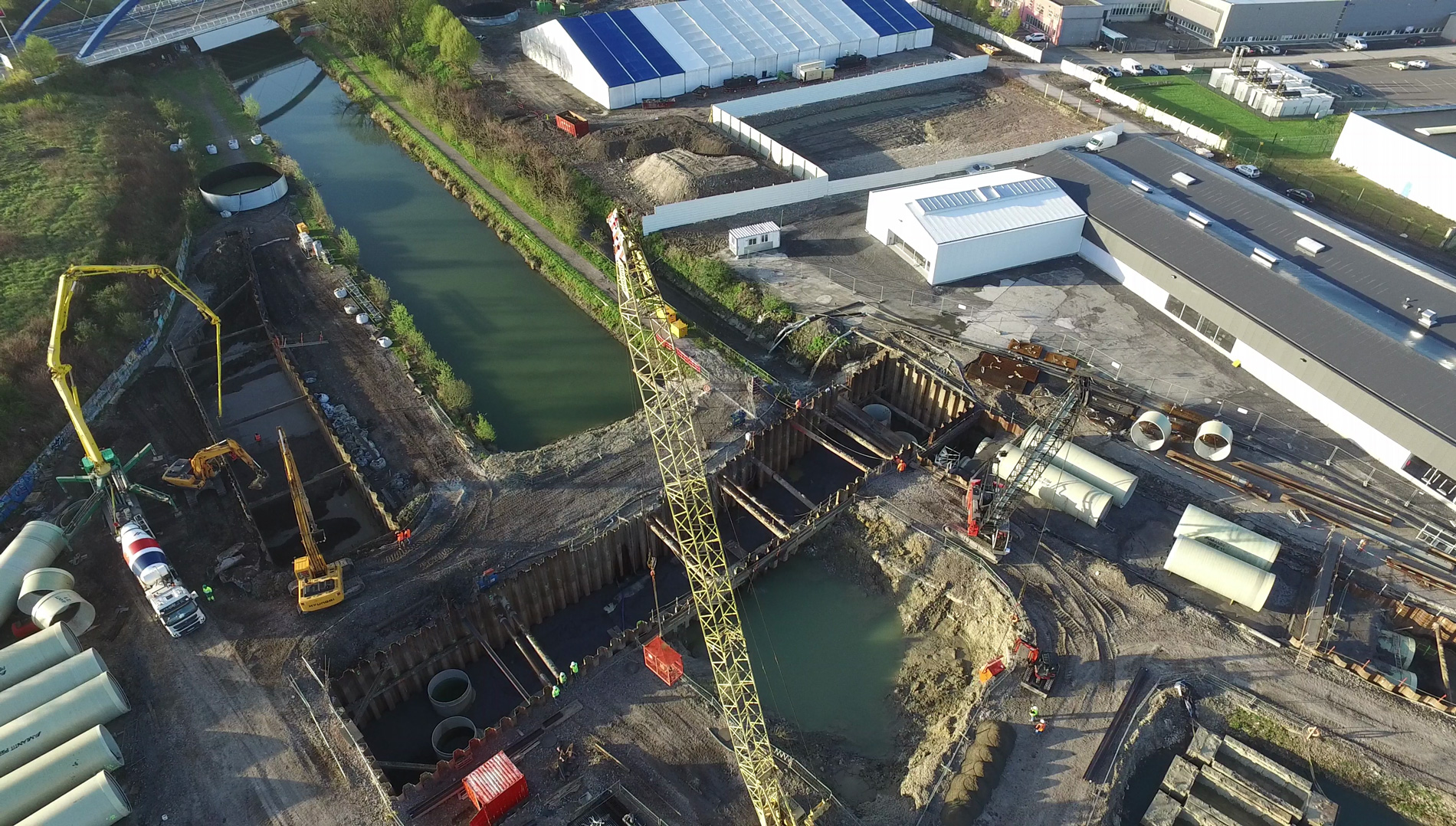TECHNOLOGY
Laying up to 3,500m of systems
To improve its wastewater treatment system and allow a neighbouring industrial wasteland to welcome new businesses, Greater Lille Metropolitan Council (Métropole Européenne de Lille – MEL) arranged for a section of its wastewater treatment system along the Roubaix canal to be covered, and a new siphon installed under its bed.
What was the issue?
Down on Quai du Sartel in Roubaix, the Le Trichon sewer main empties into an open drain several hundred metres long, before crossing the canal via a siphon to Quai de Wattrelos on the other bank and the L’Espierre sewer main which stretches to the Grimonport wastewater treatment plant. To avoid any flooding of the industrial wasteland, which is currently undergoing rehabilitation and runs alongside this drain, MEL decided to build an underground system and a siphon capable of handling flows of up to 30m3/s, i.e. 108,000m3/h.
What technical solutions were selected?
Two different ones on the banks and three under the canal. A connection chamber and a grit chamber were built at the output of the Le Trichon sewer main: two parallel Ø3,000mm GRP pipes installed at an average depth of 4m stretching from these chambers along a 75m section of the canal. These lead to a second chamber, the starting point for a double siphon, also Ø3,000mm GRP, 50m long, running under the canal bed at an average depth of 10m. Two other pipes, also parallel and with the same diameter, stretch 52m from the double siphon input chamber all the way to a new chamber for connection to the L’Espierre sewer main. Under the canal, a Ø600mm, GRP pipe, parallel to the double siphon, was also installed: this handles the dry weather flow (900m3/h) and prevents sedimentation in the main siphon.
Who does what?
This large-scale worksite was entrusted by MEL to the BOUYGUES/SADE/CLAISSE Environnement consortium, with each company showcasing its talents: SADE Group both supplying, laying and coating pipes (Arras Regional Division), and building the connection chambers (CLAISSE Environnement).



